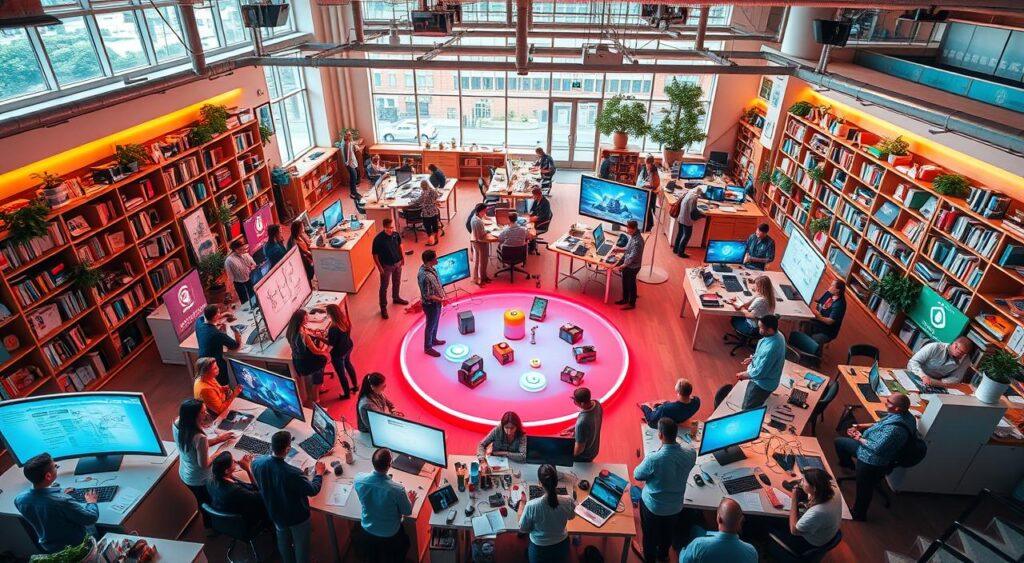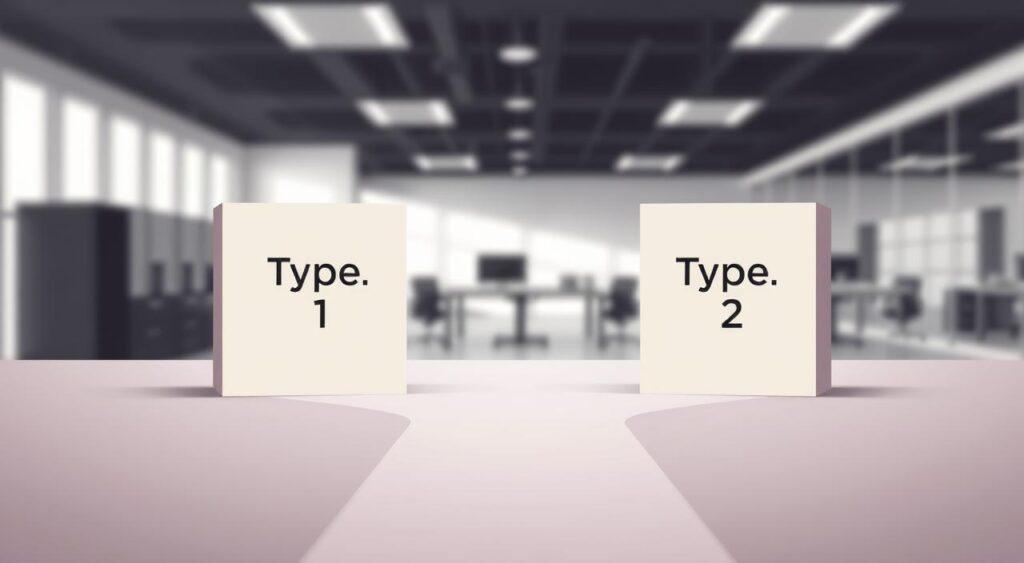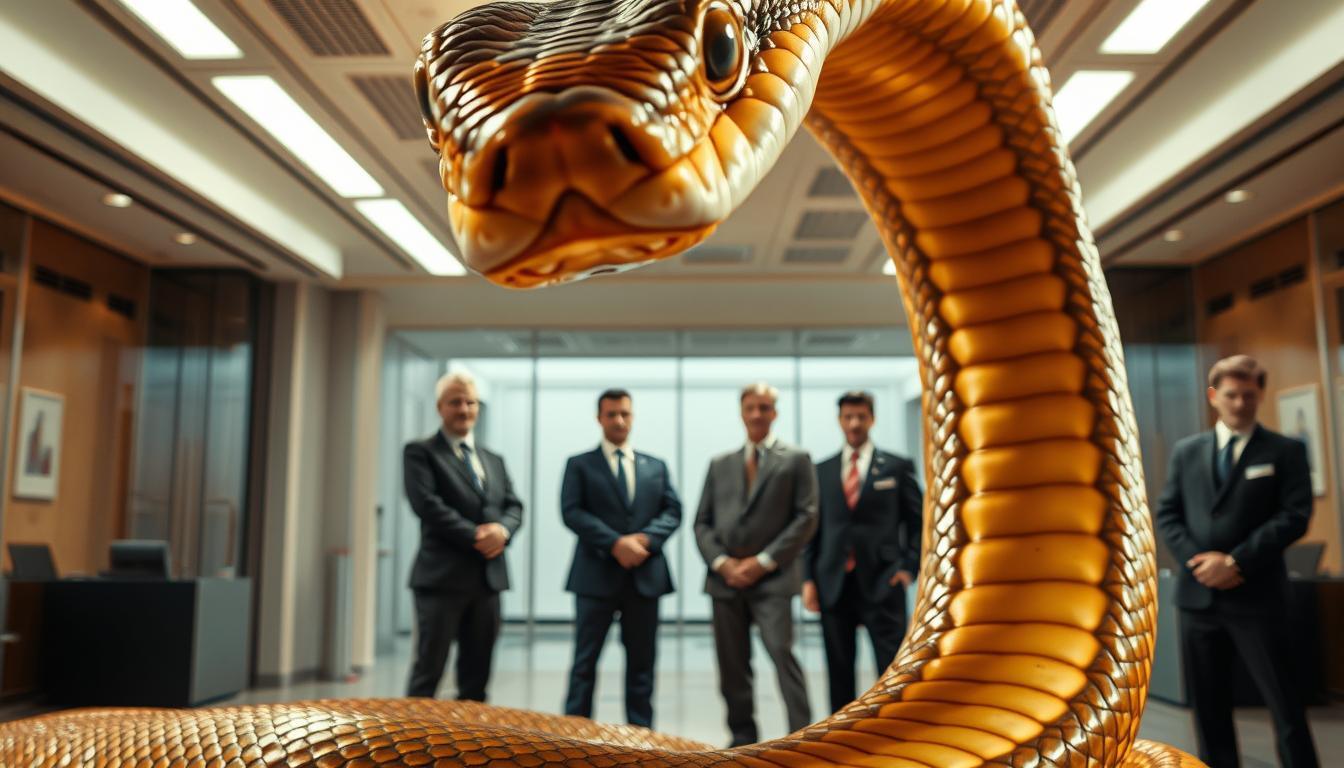Ever feel stuck making decisions because you’re afraid of choosing wrong? The two-way door mental model offers a smarter way forward. Jeff Bezos at Amazon made it famous. It helps people and teams make decisions faster and with less risk.
Decisions that can be reversed are called “two-way doors.” These are like trying a new marketing channel or tweaking a product feature. You can try it, learn from it, and go back if needed.
But some choices are “one-way doors.” These are big decisions like firing an employee or launching a major product line. They need careful thought.
The two-way door mental model is simple but powerful. It helps cut down on overthinking, speeds up innovation, and boosts confidence in making decisions. Companies of all sizes use it to test ideas quickly and grow what succeeds.
In this article, we’ll dive into how this model works, its roots at Amazon, and how teams can apply it. This way, they can make quicker, smarter decisions in today’s fast-paced world.
Key Takeaways
- The two-way door mental model: Most daily choices are reversible and don’t require exhaustive analysis
- Separate high-stakes decisions from low-risk ones to prioritize energy
- Speed matters: Quick action with room to adjust beats delayed perfection
- Business leaders like Bezos use this model to accelerate innovation
- Reducing hesitation builds confidence in your decision-making process
By framing choices through the two-way door mental model, you trade fear of failure for momentum in decision making. Let’s explore how people can spot reversible decisions—and start walking through those two-way doors.
Introduction to Rapid Decision-Making
Why do some teams thrive under pressure while others stall? The answer lies in their ability to separate urgent choices from permanent commitments.
Acting quickly isn’t about rushing- it’s about recognizing which decisions make the most impact and which moves let you pivot later. Thus avoiding the pitfalls of one-way doors for long term success in how people approach decision-making.
The Clock Is Ticking
Amazon’s leadership teams operate on a 70% rule: act when you have most—not all—of the data. Delayed choices in fast markets often mean lost revenue or missed breakthroughs. A study of tech startups found companies that decided 20% faster than competitors captured 35% more market share within two years.
Breaking the Overthinking Cycle
Analysis paralysis strikes when we treat flexible choices like final verdicts. Imagine changing a meeting time versus relocating an office—one requires minutes to adjust, the other impacts workflows for months. Labeling decisions as reversible removes the weight of perfectionism.
| Factor | Rapid Approach | Slow Approach | Outcome |
|---|---|---|---|
| Information Threshold | 70% data | 90%+ data | 2x faster implementation |
| Adjustment Capacity | 3-5 iterations | 1-2 attempts | 47% higher success rate |
| Team Morale | High engagement | Frustration builds | 31% lower turnover |
| Market Position | Early adoption | Reactive mode | 22% revenue advantage |
Businesses that master this balance don’t just move faster—they learn faster. Each reversible choice becomes a low-cost experiment. What could your team test today if “undo” was always an option?
Reversible vs. Irreversible Decisions

Daily choices often feel heavier than they need to be. The key lies in identifying which decisions allow for course correction and which demand unwavering commitment. This process distinguishes progress from stagnation, serving as a cultural example of how a number of choices can impact outcomes.
Spotting Doors That Swing Both Ways
Reversible choices—like testing a website layout or adjusting a social media strategy—let teams adapt quickly. These moves require minimal resources and offer instant feedback. If results miss the mark, you reset and try another approach with little fallout.
Irreversible commitments demand deeper scrutiny. Launching a new product line or signing a five-year lease locks you into a path. These choices carry lasting financial and operational impacts. Teams that confuse the two often stall on simple fixes while rushing into high-stakes bets.
Consider how tech companies operate: A/B testing features (reversible) versus building data centers (irreversible). The first fuels innovation through iteration. The second requires months of planning and capital. Mislabeling these costs time and trust.
Here’s the shift: Treat 80% of choices as flexible experiments. Save rigorous analysis for the 20% that alter your trajectory. What small step could you take today—and undo tomorrow—to move closer to your goals?
Think about using the First Principles Thinking mental model. It’s different from the two-way door method. The two-way door mental model tells you when to act quickly. But first principles thinking helps you find the core of a problem.
This is great for figuring out which door to choose first. It’s all about getting to the heart of the matter.
Origins and Influence of the Mental Model
Scaling a startup often comes with growing pains—more processes, more meetings, more hesitation. Jeff Bezos faced this challenge head-on as Amazon expanded. He noticed teams spending weeks debating minor choices while competitors moved faster. The solution? A radical shift in how the company approached everyday decisions.
From Startup Spark to Global Strategy
Bezos codified his approach in shareholder letters, stressing that business agility requires distinguishing quick pivots from permanent commitments. His “Day 1” philosophy rejected bureaucratic slowdowns, urging teams to treat most choices as reversible experiments. When launching Amazon Prime, for example, leaders tested concepts rapidly rather than waiting for perfect data.
Three principles drove this mindset:
- Empowering frontline employees to approve reversible choices
- Limiting high-stakes decisions to 20% of total actions
- Measuring success by learning velocity, not just outcomes
This framework helped Amazon outpace retailers stuck in endless approval loops. Teams launched features faster, gathered customer feedback, and iterated—turning small bets into billion-dollar services like AWS.
Bezos’ letters made the strategy accessible to growing companies worldwide, proving that speed and scale aren’t mutually exclusive.
Could your team’s next experiment start with a simple question: “What’s the worst that could happen if we try this—and change course tomorrow?”
Benefits of Fast Decision Cycles in Business

Speed separates market leaders from laggards in today’s business world. Organizations that master rapid choice-making unlock hidden opportunities while slower peers remain stuck in planning mode. A Harvard Business Review study reveals companies that decide quickly and adapt outperform cautious competitors by 37% in fast-moving sectors.
Accelerating Innovation Through Action
Consider how streaming services evolved. Early movers tested features like personalized recommendations through constant iteration. Slower competitors clung to traditional models while customers flocked to platforms embracing trial-and-error learning.
Fast cycles create momentum. Teams that launch prototypes gather real-world data faster than those waiting for perfect solutions. This approach mirrors how tech giants refine products post-launch—using customer feedback as their compass.
| Factor | Fast Cycle | Slow Cycle | Impact |
|---|---|---|---|
| Innovation Rate | 6-8 tests/month | 1-2 tests/quarter | 83% more breakthroughs |
| Customer Adaptation | Real-time adjustments | Annual updates | 2.4x satisfaction scores |
| Market Position | Trendsetter | Follower | 19% revenue premium |
| Employee Engagement | Ownership culture | Approval dependency | 41% retention boost |
Successful businesses understand customers often don’t know what they want until they see it. The magic happens when teams combine speed with curiosity—launching ideas that reshape markets rather than reacting to existing demands.
Could your next big opportunity be hiding behind a “good enough for now” decision?
Leveraging Decision Speed in Tech and Product Development
Tech teams move at light speed when they treat experiments as temporary. By framing most choices as low-stakes trials, they unlock rapid innovation without permanent consequences. This approach transforms product development into a series of learning opportunities rather than high-pressure gambles.
The Power of Reversible Experiments
A/B testing lets teams compare options with real users. When Amazon tested different product page layouts, they discovered subtle design changes boosted conversions by 12%. Failed variations simply vanished—no harm done. This method works because 70% of tech experiments allow quick rollbacks.
Development squads now treat features like clay rather than concrete. Try a new checkout flow Monday, revert Wednesday if data shows friction. Mobile apps use this daily—testing button colors or menu structures without disrupting core functions.
Real-World Innovation Labs
Amazon Web Services began as a series of small bets. Teams built prototypes, gathered feedback, and iterated relentlessly. What started as internal tools became a $62B cloud empire through constant adjustment.
Streaming platforms use similar tactics. When testing recommendation algorithms, they deploy multiple versions simultaneously. Customers unknowingly guide improvements through their viewing patterns. These controlled risks lead to breakthroughs traditional planning often misses.
Could your next product update benefit from “temporary” thinking? What minor change could you test—and undo—by Friday?
Building a Culture of Experimentation

Great gardens grow from small seeds—and so do innovative teams. At Amazon, leaders nurture curiosity by treating every employee as a potential inventor. Their secret? Viewing expertise as a starting point, not a finish line. Even seasoned professionals approach challenges with a beginner’s mindset, asking: “What if we tried this differently tomorrow?”
Encouraging Teams to Experiment and Learn Quickly
True innovation thrives when people feel safe to test ideas. One tech company slashed approval layers for low-risk projects—resulting in 14% more product launches within six months. Teams stopped waiting for perfect plans and started learning through action.
Psychological safety fuels creative risk-taking. When a marketing team introduced “failure debriefs,” they discovered 68% of unsuccessful campaigns revealed valuable customer insights. These lessons became springboards for future wins.
Smart organizations celebrate intelligent stumbles. A fintech startup hosts monthly “Best Blunder” awards, sharing lessons from reversible missteps. This practice builds resilience while reinforcing that growth requires occasional detours.
Leaders set the tone by framing experiments as discovery missions. When a retail chain let store managers tweak layouts without corporate approval, customer satisfaction jumped 19%. Small bets created big wins—proving trust accelerates progress.
What invisible barriers might dissolve if your team embraced “try-it-now” thinking?
How Two-Pizza Teams Drive Agility
Big groups move like elephants—small squads sprint like cheetahs. Amazon’s secret weapon? Teams so compact they’re fed with two pizzas. This approach turns bureaucratic tangles into streamlined action, enabling faster decisions that benefit the business and its shareholders.
These agile teams also follow the Optionality Mental Model. This model favors flexible strategies with big upsides and small downsides. When you can change your mind, you open up more room for innovation.
Decentralizing Decision-Making for Speed
When teams shrink to 10 members or fewer, magic happens. Fewer meetings. Faster approvals. Direct lines to customers. A retail company using this model cut project launch times by 40%—decisions reached in hours instead of weeks.
Frontline people make better calls than distant executives. Engineers closest to code bugs fix them quicker. Support reps hearing daily complaints spot trends first. Speed comes from trusting those with boots on the ground.
Empowering Small, Autonomous Teams
Ownership changes everything. When squads control outcomes, they invest deeper. A SaaS company saw 31% faster feature updates after letting teams self-manage releases. No more waiting for three managers to sign off.
These groups pivot like startups. Test a pricing model Tuesday. Adjust based on Wednesday’s sales data. By Friday, they’re refining the next experiment. Bureaucracy fades as action takes center stage.
Could your next breakthrough come from a team small enough to share two pies?
Deep Dive: Two-Way Door Mental Model in Action

What separates decisive teams from hesitant ones? A simple question: “Can we undo this?” This approach transforms how organizations tackle daily choices thereby focusing energy on what truly matters while keeping progress fluid. In a lot of cases, teams must learn to disagree and commit to decisions, knowing that failure is part of the process and can lead to better outcomes over time.
Practical Frameworks and Implementations
Start by training teams to categorize choices using three filters: reversibility, resource impact, and learning potential. A retail company slashed meeting times by 40% using this method—deciding vendor contracts (irreversible) required deeper analysis than adjusting store hours (reversible).
Build clear criteria tailored to your industry. Tech squads might label software updates as low-risk experiments, while healthcare teams could classify protocol changes as high-stakes. The key lies in consistency—document what constitutes a “walk-through door” decision in your context.
Empower frontline staff with ownership. When a logistics company let warehouse managers approve reversible changes like packaging tweaks, implementation speed doubled. As highlighted in Jeff Bezos’ decision-making philosophy, trusting teams with adjustable choices fuels innovation without chaos.
Measure what matters: Track both the pace of decisions and their outcomes. One SaaS firm found that 78% of reversible choices led to positive results—even when initial data seemed shaky. Regular practice sessions help teams refine their judgment muscles over time.
Could your next team meeting include a five-minute “reversibility check” on pending items?
Structuring Decisions: Type 1 vs. Type 2

Navigating business choices feels like steering through fog—some paths clear quickly, others demand careful plotting. Leaders thrive by separating permanent commitments from adjustable experiments, often employing a two-way door mental model approach to facilitate correcting bad decisions when necessary.
Two-Way Door Mental Model: Spotting High-Stakes Choices
Type 1 decisions shape your organization’s future. Mergers, factory builds, or shifting core services require months of research. A healthcare provider spending $20M on new equipment can’t return it next quarter—these choices demand cross-department reviews and financial modeling.
Embracing Swift Adjustments
Type 2 choices thrive on speed. Changing a software interface or testing holiday promotions? These moves let teams act with 70% confidence. A clothing retailer increased sales 18% by letting store managers tweak displays weekly—reversing layouts that underperformed within days.
| Factor | Type 1 | Type 2 |
|---|---|---|
| Reversibility | Costly/Impossible | Easy/Cheap |
| Time Investment | Weeks/Months | Hours/Days |
| Examples | Company acquisitions | Social media tests |
| Outcomes | Strategic shifts | Immediate feedback |
Teams often mislabel Type 2 decisions as Type 1—delaying progress. A simple filter helps: “What’s the undo cost?” If reversing a choice takes less than 5% of your quarterly budget, it’s likely adjustable.
How many choices on your desk right now could become tomorrow’s valuable lessons instead of today’s roadblocks?
How the Two-Way Door Model Aligns with the OODA Loop
The two-way door mental model and the OODA Loop share key principles. They focus on speed, being adaptable, and learning when things are uncertain. The OODA Loop, which started in military strategy, is now used in business and product development.
It promotes quick cycles of assessment and action. This is similar to the two-way door framework, which supports making fast decisions when risks can be undone.
Together, these models strengthen each other. The two-way door helps figure out which actions can be reversed. The OODA Loop ensures teams keep adapting based on what they learn after acting.
Tech companies, startups, and top teams use both frameworks. They do this to stay quick and agile in changing environments.
Minimizing Analysis Paralysis through Reversible Choices
Have you ever spent hours debating a choice that ultimately didn’t matter? Overthinking often stems from misjudging which decisions truly shape outcomes. By focusing energy on adjustable actions, you sidestep the tendency to seek perfect answers for every scenario.
Reversible choices act as pressure valves. Testing a new email format or adjusting meeting agendas costs little to reverse. Teams that master this shift spend less time circling options—and more time testing what works. A marketing agency reduced planning sessions by 62% after categorizing 80% of daily choices as low-stakes experiments.
Speed becomes your ally. When you treat most decisions as temporary, you gather real-world data faster. One founder credits this approach for cutting product launch timelines in half: “We stopped waiting for 100% certainty and started learning through action.”
This focus on fast feedback echoes the OODA Loop mental model. Just like two-way doors, the OODA Loop encourages action without waiting for perfect information. It helps teams pivot in real time based on new inputs.
The secret lies in asking one question: “How easily could we undo this next week?” If the answer comes quickly, you’ve found your way forward. What small step could your team take today—with permission to pivot tomorrow?
Conclusion
The two-way door mental model changes how we deal with uncertainty. It helps us find reversible decisions. This way, we can act faster, feel less fear, and keep learning.
Amazon and agile tech teams around the world use this model. It lets them experiment without big risks.
Using it with other models like the OODA Loop or Type 1/Type 2 decision filters makes it even better. The aim is to make the right mistakes fast and then adjust.
When you’re unsure what to do, think this: What’s the worst that could happen, and could we undo it tomorrow? If yes, then go ahead.


